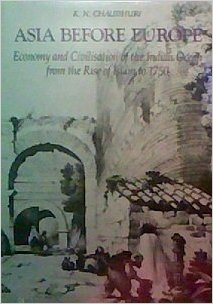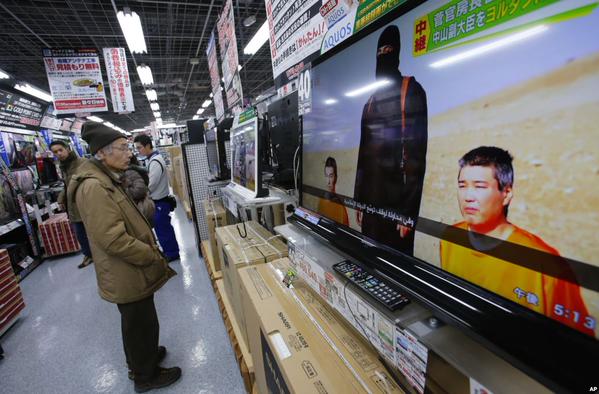 In the final scene of Barry Levinson’s 1990 film, “Avalon,” Michael, the grandson (played as a child by Elijah Wood and by Tom Wood as an adult), is now all grown up, with a son of his own, and on yet another Thanksgiving, he goes to the nursing home to visit his grandfather, Sam, who is now quite forgetful and aged. Continue reading ““Gone. All Gone””
In the final scene of Barry Levinson’s 1990 film, “Avalon,” Michael, the grandson (played as a child by Elijah Wood and by Tom Wood as an adult), is now all grown up, with a son of his own, and on yet another Thanksgiving, he goes to the nursing home to visit his grandfather, Sam, who is now quite forgetful and aged. Continue reading ““Gone. All Gone””
Kiss Kiss
 Last week I saw this interesting post, concerning an article written by a US Peace Corps volunteer stationed to Ghana. It details various ways in which greetings take place and the verbal and behavioral traits that attend various sorts of greetings. Continue reading “Kiss Kiss”
Last week I saw this interesting post, concerning an article written by a US Peace Corps volunteer stationed to Ghana. It details various ways in which greetings take place and the verbal and behavioral traits that attend various sorts of greetings. Continue reading “Kiss Kiss”
You Are What You Read, With Steven Ramey (Part 1)

For a new Culture on the Edge series “You Are What You Read” we’re asking each member to answer a series of questions about books — either academic or non-academic — that have been important or influential on us.
 1. Name a book you read early on that shaped the trajectory of your career.
1. Name a book you read early on that shaped the trajectory of your career.
My current interest in alternative ways of discussing identifications and labels builds on my early consideration of the tension between the complexity of practices in India and the language of religious studies that assumes clearly bounded religions and religious identification. The book in graduate school that first provided an alternative way to discuss this tension was not a book that directly addressed the issues that interested me. K. N. Chaudhuri’s book Asia Before Europe opened up the possibilities of reconfiguring the ways we talk about the world, as Chaudhuri shifts the paradigm by acknowledging the different choices that people make when they construct historical narratives, even when they do not acknowledge those choices. He writes, “The analysis shows that historical events, structures, or phenomena can be grouped into different classes of time which have different qualitative properties, different ‘frequencies’, and unequal power’.” While such a notion is not unique to Chaudhuri, reading this book that attempts to chart cultural histories in a more complicated fashion awakened me to the possibilities of developing alternative ways of discussing religions that acknowledge the constructive nature of discourse. Continue reading “You Are What You Read, With Steven Ramey (Part 1)”
Blaming the Victim

As I write this the fate of two citizens of Japan is still in question — kidnapped in Syria and threatened with execution if their government does not pay a $200 million ransom to ISIS. Continue reading “Blaming the Victim”
What Did You Mean?

What makes something offensive? In the contemporary context, some attempt to censor (often through social media campaigns) presentations that they consider offensive, making that label particularly useful for restricting public discourse. Two stories from December highlight the complexity of labeling something offensive.
A shopper in California during the holiday season noticed that wrapping paper in the Hanukkah section of a store had swastikas incorporated into the design. Deeply troubled by this symbol that the shopper associated (for obvious reasons) with Nazism, she reported it to the manager. With the story reaching the media, the store removed the wrapping paper with the offensive design nationwide and began an investigation into how the design was created and approved. Continue reading “What Did You Mean?”
Dignity or Freedom
 Human dignity and freedom are two values that many people reference in contemporary society. Like other terms that are useful in political and societal debates, people maintain competing definitions of these two terms. One person’s assertion of human dignity competes with another’s assertion of individual freedom.
Human dignity and freedom are two values that many people reference in contemporary society. Like other terms that are useful in political and societal debates, people maintain competing definitions of these two terms. One person’s assertion of human dignity competes with another’s assertion of individual freedom.
Disputes over a festival at the Kukke Subrahmanya Temple in Karnataka, India, last month illustrate this malleability and subsequent tension. During this festival, one group of devotees (identified as high status Brahmins) consume a meal, and then the remaining food and their banana leaf plates are spread on the floor. Other devotees (identified as low status Dalits and indigenous “tribal” people) physically roll across the banana leaves. One understanding of the practice fits into the cultural constructions of status and purity, as the leftovers of a higher status person are pure, even purifying, while the leftovers of a lower status person are polluting. Because of the socially recognized status differential between those who eat and those who roll on the leavings, some identify this practice as an affront to the human dignity of the participants, as it reinscribes on each group their respective status. An op ed in the Bangalore Mirror concerning the practice related it to sati (burning of widows on a funeral pyre), declaring that this practice “is disgusting in this era of science and progress.” Continue reading “Dignity or Freedom”
The Well-Intentioned Racist

As Americans today celebrate Martin Luther King, Jr. Day, many of us continue to grapple with how to contextualize and understand the recent deaths of several young black American men at the hands of the police. This need to explain is thrown into even starker relief with the very recent story that black men’s photos are being used for target practice by the North Miami Beach police department. The chief of police insists that this is a case of “poor judgment,” not racism, because those officers taking aim at the targets are themselves multi-racial, and because other races are portrayed in other targets. As one might expect, however, at least one of the black men whose face became a target is not personally reassured, saying, “Now I’m being used as a target? … I’m a father. I’m a husband. I’m a career man. I work 9-to-5.”
It may seem quite paradoxical to discuss a “well-intentioned racist,” but arguably, there is usually no other kind. I am often amazed by how we expect that racism (or discrimination, more generally) is something committed by self-described bigots. Like many others who study and teach about social dynamics, I frequently tell my students that prejudicial behaviors and attitudes are not only ubiquitous, but also quite mundane — they are simply the old recipe of one part distinction and another part essentialization — and they are used to stir the stew of social power. Continue reading “The Well-Intentioned Racist”
Jousting Matches

 So read the report in a variety of newspapers on Wednesday; elaborating, the story continued: Continue reading “Jousting Matches”
So read the report in a variety of newspapers on Wednesday; elaborating, the story continued: Continue reading “Jousting Matches”
The Problem with Phallic Play-Doh

In yet another example of how categorization matters, consider the latest controversy in children’s playthings: Hasbro Corp., maker of the famous Play-Doh brand modeling clay, recently released a Play-Doh set featuring a clay extruder that looks astonishingly like a penis. Hasbro has apologized to consumers offended by the shape of the extruder and has promised a replacement that’s, shall we say, less anatomically correct. Continue reading “The Problem with Phallic Play-Doh”
Rhetorical Unity
 The many rallies in Paris and elsewhere yesterday provide an intriguing example of the malleability of unity as a symbol. The crowd in Paris, according to reports, was both enormous and diverse, including a range of foreign dignitaries and political leaders. In addition to various European leaders from Russia, Germany, and Britain alongside the President of France, Israeli Prime Minister Binyamin Netanyahu and Palestinian leader Mahmoud Abbas both participated. The Guardian described the Paris march,
The many rallies in Paris and elsewhere yesterday provide an intriguing example of the malleability of unity as a symbol. The crowd in Paris, according to reports, was both enormous and diverse, including a range of foreign dignitaries and political leaders. In addition to various European leaders from Russia, Germany, and Britain alongside the President of France, Israeli Prime Minister Binyamin Netanyahu and Palestinian leader Mahmoud Abbas both participated. The Guardian described the Paris march,
This was a nationwide outpouring of grief, solidarity and defiance. Parisiens of all ages, religions and nationalities turned out en masse not only to show their respect for the victims but their support for the values of the Republic: “liberté, égalité, fraternité” – freedom of speech and freedom of the press.
